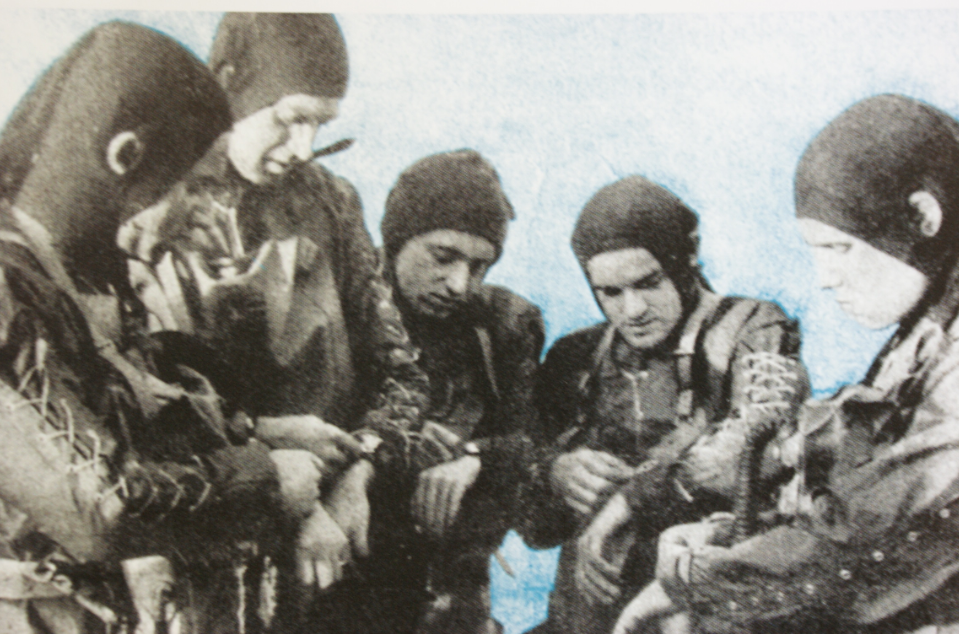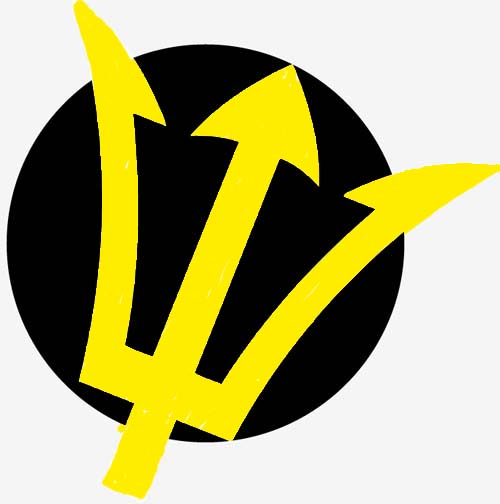
Kampfschwimmer im 2. Weltkrieg
Formation and training of a Kampfschwimmer unit during World War II was an act of despair. For years the German war machine, with its ultra-modern heavy weapon systems and cutting edge equipment, had enjoyed an unbroken record of success. This provided the proponents of conventional warfare who dominated the command staff no incentive for standing up naval commando forces. As the Allied vanguard moved closer to the Third Reich’s borders during the final third of the war it became obvious that Germany was under considerable strategic pressure. Human and material resources also began to get scarce. These factors combined changed the military leaders’ mind regarding the need for naval commandos. The navy’s Kleinkampfmittelverbände or “K-Units” were formed. This term is frequently translated as “small combat units”, although “asymmetric combat units” may be more accurate given their raison d’etre and tactics. Kampfschwimmer were integrated into the K-Units. Like the German army’s “Brandenburger” commando units, the K-Units would prove to be highly mobile and formidable opponents for the anti-Hitler coalition’s armed forces.
Following the example of the British Royal Navy’s X-Craft, the K-Units deployed manned torpedoes as well as mini-submarines armed with torpedoes. The main combat element of these units consisted of “Neger” and “Mader” type manned torpedoes as well as “Biber” and “Seehund” type mini-subs. They also employed explosives-filled motorboats. The pilot would aim his boat at a target vessel, fix the steering wheel, then jump overboard while the boat raced on to impact. Kampfschwimmer formed the smallest element of the K-Units.
The first Kampfschwimmer training course was conducted in late 1943 by the military intelligence office in Hamburg. The resulting unit was a pure Kampfschwimmer unit with the official designation Marineeinsatzkommando (Maritime Task Force) or MEK. The first thirty trainees were volunteers including experienced and highly qualified soldiers the the Brandenburger’s coastal ranger division. The MEK was divided into two companies designated “Marco” and “Marei”. The primary mission consisted of attaching mines to ships, bridges and locks.
With formation of the K-Units (the designation became official on 20 April 1944) the MEK units were consolidated and transferred from military intelligence to the navy, which assumed control over all maritime special missions. RearAdmiral Helmuth Heye was appointed commander of the naval special operations command. Admiral Heye had served as a submarine officer during WW I, and commanded the armored cruiser ADMIRAL HIPPER when WW II broke out. After the war he would contribute to the Himmerod Memorandum (which would serve as the basis for Germany’s postwar rearmament), and later serve (1961-1964) as defense ombudsman for the German parliament.
The first Kampfschwimmer training under auspices of the navy did not take place until 1944. Olympic athletes and other record-breaking sportsmen were among the first trainees. Prior to being assigned to Kampfschwimmer training these sailors had been conducting athletic training in Kiel; their public workouts were intended as a recruiting tool for the navy. The first Kampfschwimmer training took place in the small town of Valdagno in Italy’s Appenine mountains. It boasted a modern pool and Olympic quality athletic facilities. These facilities were also used by the Italian naval commandos (Decima MAS or 10th Fast Boat Flotilla). Following initial training at Valdagno the sailors transferred to the island of Alga in Venice lagoon for advanced training.
Training was closely patterned on that of the British commandos who operated behind enemy lines. Comprehensive, high-quality training was achieved by seconding frontline-seasoned infantry and combat engineers as instructors. A premium was placed on athletic conditioning, and every trainee had to master hand-to-hand combat, writes Cajus Becker in his book Einzelkämpfer auf See (“Solo Warriors at Sea”). The primary offensive arm were the so-called “exploding fish”, tubes filled with 7.5 kilos of explosives. They were equipped with time-delayed or remote-controlled fuzes. Other equipment included Dräger dive tanks, rubber suits, dive watches, compass, fins or lead shoes. The first 30 graduates were ready for duty by June 1944.
The third training location was the SS Junkerschule (Officers’ Training School) in Bad Tölz. To maintain secrecy the naval volunteers were trained at the facilities pool complex between 10 PM and 6 AM. The SS attempted to have these men – and eventually all Kampfschwimmer – placed under their control, but the Naval High Command (essentially Admiral Heye) was able to prevent this. Once trained, the Kampfschwimmer were transferred out of Bad Tölz.
The Kampfschwimmers greatest success during WW II lay not in missions against Allied ships at sea or in harbor. but in riverine operations to sabotage bridges. For example, in September 1944 they destroyed the Ally-occupied bridges over the Orne and the Orne Canal (located six kilometers north of Caen), a bridge over the Waal near Nijmegen, and a pontoon bridge across the Oder. They also put the port of Antwerp out of operation for three months bei blowing up a lock gate of the Kreuzschanz-Locks. A total of 450 men trained as Kampfschwimmer between 1943 and 1945, but only sixty ever qualified as operational.




